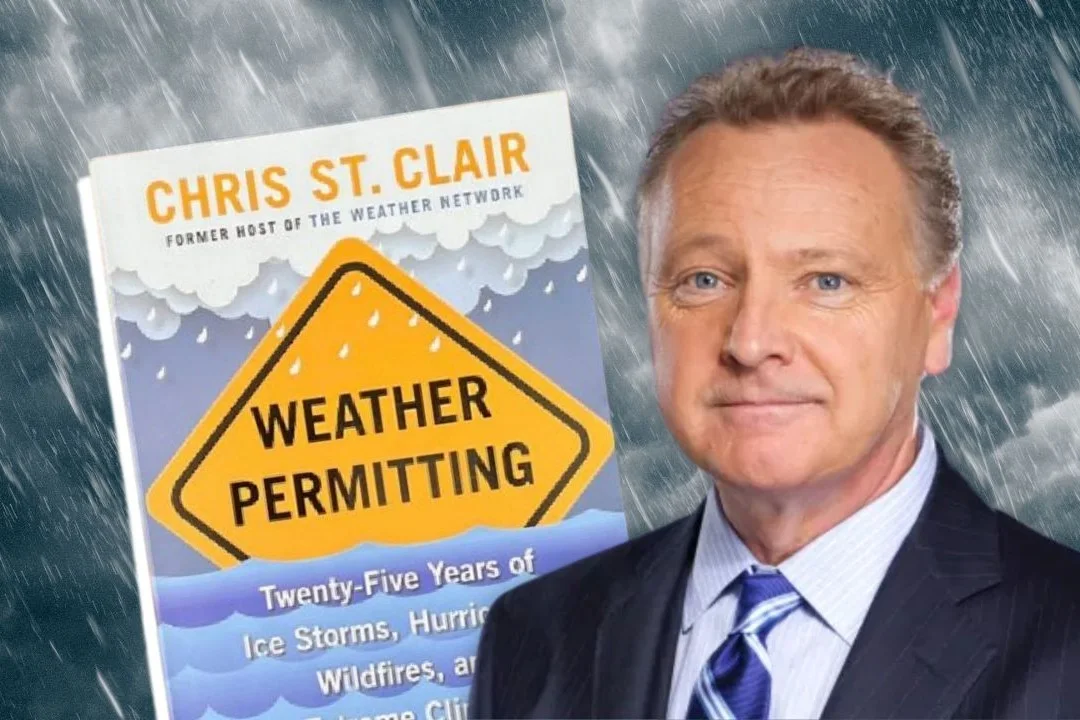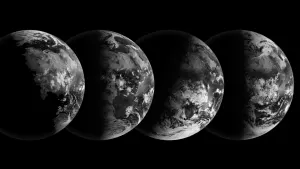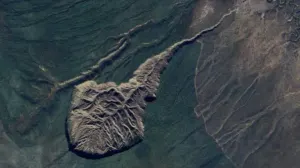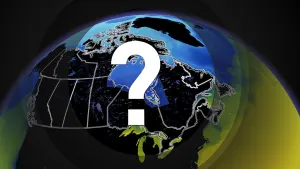
Explore 25 years of extreme weather in Chris St. Clair's new book
A regular staple of The Weather Network's on-air forecasts for more than 20 years, Chris St. Clair is continuing to share his experiences and love affair with the subject in new his book, Weather Permitting.
Even though Chris St. Clair is no longer on air, he's certainly not ready to stop talking about the weather.
St. Clair, who joined The Weather Network as a presenter in 1995, stepped down from his role in July 2021 after 26 years. He experienced and shared stories on the worst of what Mother Nature can dish out -- from nor'easters and the devastating wildfire in Fort McMurray, Alta., to powerful hurricanes such as Sandy and Irma.
RELATED: Farewell forecast: Chris St. Clair closes door on legendary career
Many of the aforementioned experiences are recalled in detail in St. Clair's new book, Weather Permitting, which was released earlier this month. To promote the release of it, he stopped by The Weather Network studio in Oakville, Ont., on Wednesday, Nov. 9.
In an interview with Paul Campbell, video and editorial manager at The Weather Network, St. Clair discussed his two-plus decades covering Canadian and international weather events in his new book.
Q-and-A with St. Clair
The questions and answers were transcribed from a video interview.
The questions and responses were only edited for length, clarity and grammar.
Campbell: Talking about Weather Permitting, Chris, what's the book about?
St. Clair: The book is about 25 years of significant weather events in Canada or events that have affected Canadians, and how these events, when you look at them individually and then collectively, are signals that we are in a climate crisis. The severity of weather and the frequency of severe weather that we've been having is only going to increase, which kind of underscores how important it is that we start paying attention to things we can do differently to try and mitigate the repercussions of our changing climate.
Campbell: You did a lot of research on this book. What did you learn?
St. Clair: You know, I love research. Even when I did my shows here, I loved spending a couple of hours on every show just doing research and finding out about things. It was learning. There's a chapter in the book about the flood in Winnipeg, and [it] has been flooding ever since the last ice age. But, when we first built Fort Garry, back in the 1800s, the Indigenous Peoples didn't live there. They met there to do their trading, but they didn't live there. And they warned the settlers that this place is prone to flooding and they shouldn't flood. So, researching why Winnipeg floods and the whole story of Lake Agassiz, which was the melting ice sheet that covered most of North America during the last ice age 10,000 years ago, and visualizing it in my mind was really a joy to do in the book. It's something we don't think about our Earth [and what it] looked like 10,000 years ago because it was a completely different environment.

Chris St. Clair recently stopped in to The Weather Network studio in Oakville, Ont., to discuss his recently released book, Weather Permitting. (The Weather Network)
Campbell: You were at The Weather Network for 25-plus years. You talk about a lot of events in the book that you were a part of covering. Is there one that stands out that was special to you? Or more important than others?
St. Clair: Every one of them had its highlights and its meaningful moments. But the one that was most impactful...I would say even changed the way I think, and impacted my life and impacted the life of hundreds of thousands of people was the Fort McMurray, [Alta.,] fire. It was definitely impactful to every citizen who lived there. Eighty-thousand people live in Fort McMurray, and [many] ran for their lives. But you think of their families and their extended families, and the number of Albertans and Canadians who all came together over a period of two weeks to answer a call for help. That was singularly the most impactful of it. I think it said a lot about how people behave in a time of crisis, and how human connectivity is still something that grounds all of us. No matter what your stripe is politically or religiously, or where your station in life is economically, people love helping others and will help others. A lot of times we build barriers and that particular event broke down barriers for everybody.

Campbell: Climate change is obviously [a recurring topic] through this whole book. Chris [Bilton; The Weather Network climate change and sustainability editor] was asking you and talking about how we tell the story about climate change, and how maybe we could have done a better job leading up to where we are today.
St. Clair: In hindsight, there are ways that it could have been told better, standing at the position that we're at right now. But the media can be a prisoner of itself, too. It's a money-making business. There's an old line that 'car accidents lead in a newscast,' and for some reason, sensationalism leads. So, taking that important story of climate change, journalists took a natural tendency, which was to sensationalize the story. Unfortunately, with climate change, the oil industry had a lot of money to hire lobbyists and people to build a case that climate change wasn't real, or that climate change was real, but the human aspect of global warming wasn't real. They spent a lot of money and spread a lot of untruths. It propagated a problem for journalists because a journalist always wants to give both sides of the story. So, if suddenly, somebody's saying this may not be true whereas the body of science [is] peer-reviewing [its] information and saying 'it is true,' journalists were left with still wanting to have credibility by offering both sides of the story, and unfortunately, fell into the trap of offering both sides of the story. All you need to do is plant a seed of doubt in a person's mind. As we evolve forward to modern media today, it's so fragmented. Digitally, there are so many sources. Anybody who has a cellphone can create a profile in social media and attract followers, and can put out information. From where we are in media now, it becomes incumbent upon the consumer to do research, spend time reading and doing the job that journalists have done for years, which is collecting facts and finding out what is true and what isn't true. And then being able to make an educated, smart decision about what is real.
St. Clair's book, Weather Permitting, is now available to purchase in stores and online.
WATCH: Celebrating 26 years of storytelling across Canada with Chris St. Clair
Follow Nathan Howes on Twitter.










